(July 13, 2025) One January morning in 1908, a crowd gathered outside a Johannesburg courthouse. Inside, two men stood trial — one a young lawyer from India, the other a Tamil merchant from Mauritius. Both had refused to comply with the colonial government’s new registration laws for Indians. The lawyer was Mohandas Karamchand Gandhi. The man beside him, resolute and calm, was Thambi Naidoo.
Though history would go on to immortalise Gandhi, it was men like Thambi — traders, labourers, and ordinary migrants — who held up the scaffolding of the satyagraha movement in South Africa. A produce wholesaler turned activist, Thambi became one of Gandhi’s earliest and most loyal allies, playing a key role in mobilising Indian communities against institutionalized racism. Over the next decade, he led protests, went to jail several times, endured personal tragedies, and worked hard to bring together Indians from different languages and backgrounds across South Africa.
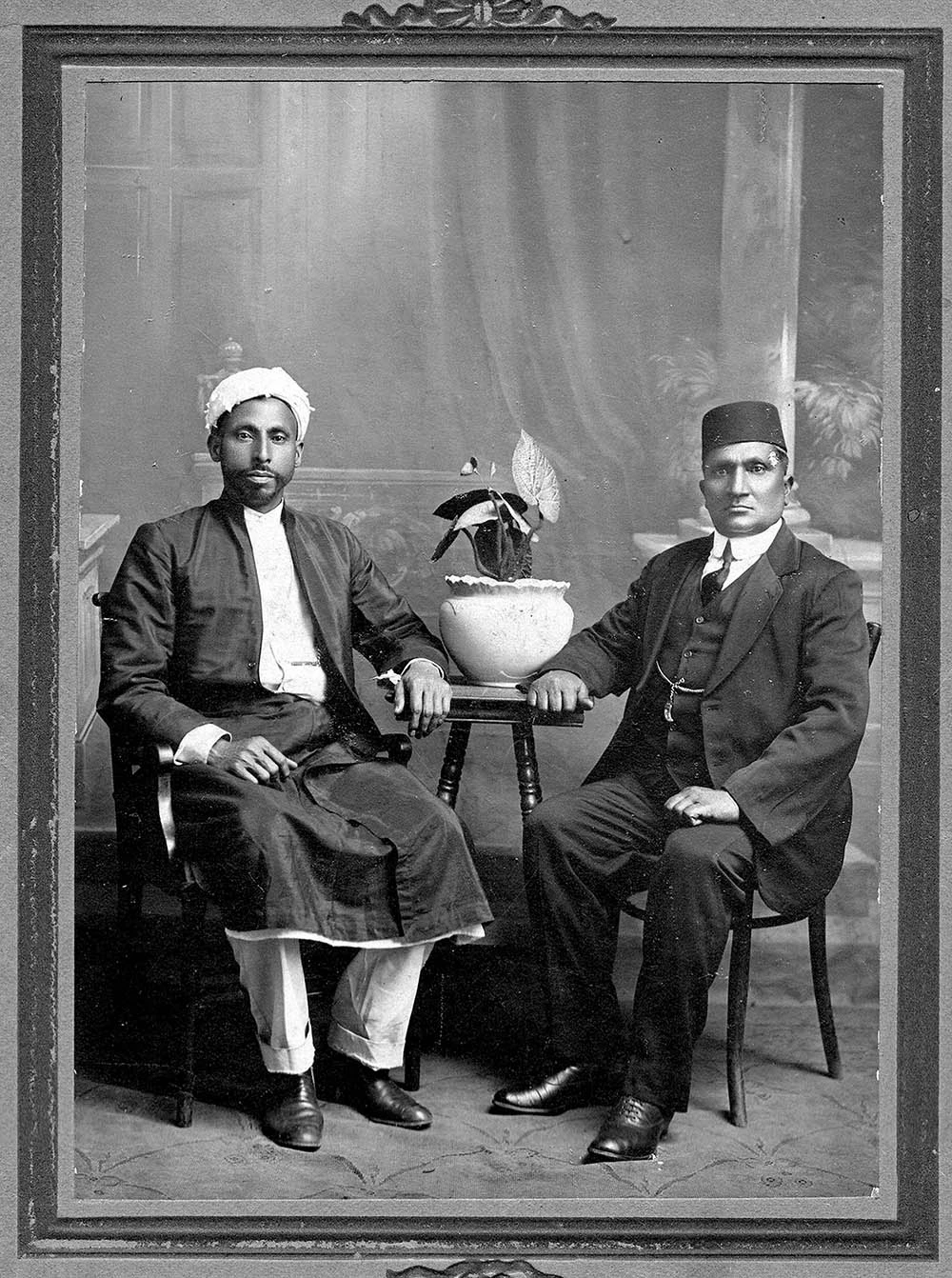
Thambi Naidoo
Thambi Naidoo’s story is more than just one of support—he was a key figure from the Indian diaspora who helped build the first steps of non-violent protest. His work with Gandhi in South Africa became the starting point for a larger global movement.
Early Life: From Island Roots to the Call of Justice
Thambi Naidoo was born in 1875 in Mauritius, where his family had settled after leaving India decades earlier. His parents were of Tamil heritage (originally from Madras Presidency in British India) and part of the Indian diaspora that had been sent to work on the sugar and fertilizer plantations of the British colonies. Growing up in multicultural Mauritius, young Thambi did not face the harsh racial laws that plagued South Africa. His father, a prosperous contractor, instilled in him a sense of duty to the community. “You are my youngest son. You must think of the people before you think of yourself,” his father advised – words that Thambi “took to heart” as a guiding principle.
At the age of 14, Thambi answered a personal call to adventure: he left Mauritius with his siblings and journeyed to South Africa in 1889. Many immigrants came to South Africa after diamonds and gold were discovered. Thambi started a small fruit and vegetable business in Kimberley, and later moved to Johannesburg when more people came in search of gold. By the time he was in his late teens, he was running a successful produce and transport business. But behind his growing business, a deeper problem was unfolding—one that would soon push him into the world of activism.
In Johannesburg, Thambi saw racial discrimination up close for the first time. The government had laws that forced Indians to live in separate areas and limited where they could go. These laws were part of a bigger system that treated Indians—and other people of color—as second-class citizens. Indians weren’t allowed to own land in white areas, couldn’t go into certain places at night, and had to carry special permits just to move around.
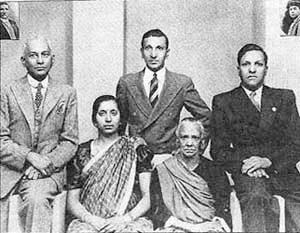
Thambi was shocked by this kind of discrimination, especially after growing up in a fairer society in Mauritius. During a smallpox outbreak, the government banned Indian traders from the city market—even if they came from areas with no illness. Thambi helped organise a protest with other Indian traders. Their planned march made the officials change their decision, and they ended the ban except in areas directly affected by the outbreak.
This victory was Thambi Naidoo’s call to justice. By age 19, he was already leading delegations to the Johannesburg Town Council and even petitioning President Paul Kruger of the Transvaal on behalf of the Indian community. He also helped found the Tamil Benefit Society, a mutual aid group for Tamil-speaking workers, to safeguard their welfare amid the hostility. The ordinary trader from Mauritius was fast becoming an activist, answering the call to defend his people’s dignity in a foreign land.
Meeting Gandhi: A Fateful Alliance
Thambi’s journey took a pivotal turn when Mahatma Gandhi arrived in South Africa in 1893. Gandhi had come as a young lawyer and soon began mobilizing Indians in Natal and Transvaal to resist oppressive laws. The Indian community, numbering over 100,000 by the early 20th century, faced systemic racism and exclusion from basic rights. They were treated as second-class subjects, expected to pay special taxes and carry registration certificates, and denied legal recognition of their marriages if they weren’t Christian.
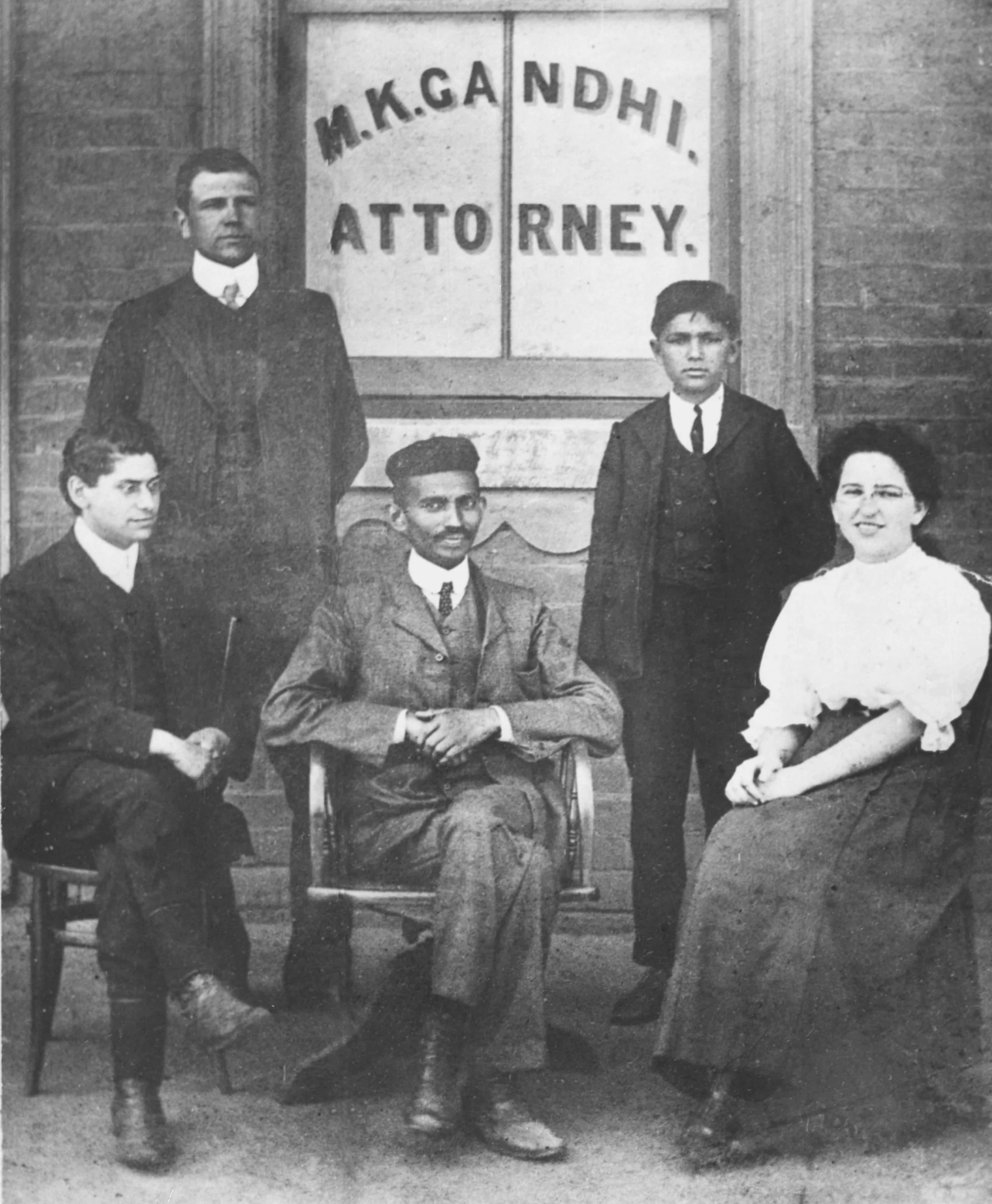
Mahatma Gandhi in South Africa (Photo Credit: AP)
After the Anglo-Boer War, Gandhi settled in Johannesburg, and it was here that Thambi Naidoo found a mentor and ally in him. Drawn together by the shared cause of justice, the two men quickly developed a bond of trust and purpose. Thambi joined the executive committee of the Transvaal British Indian Association, working closely with Gandhi, who was the secretary. Gandhi recognized Thambi as one of his most dependable lieutenants – a “brave and courageous” colleague who would stand by him through thick and thin.
In September 1906, at a massive meeting of the Indian community in Johannesburg, Thambi Naidoo stepped into a leadership role on the national stage. The meeting was called to oppose the new Asiatic Ordinance, a proposed law requiring all Indians (even children) to carry fingerprinted registration passes – an insult and hardship to the community. When Gandhi urged everyone to refuse these passes even at the cost of jail, it was Thambi who seconded the resolution. He then passionately explained Gandhi’s message in Tamil for those in the crowd who did not understand English. This moment sealed Thambi’s place as a bridge between Gandhi and the local Indian diaspora, especially the Tamil speakers. It was the beginning of Satyagraha (non-violent resistance) in South Africa, and Thambi Naidoo stood at Gandhi’s side as the struggle was set in motion.
Trials and Tribulations: Courage in the Face of Repression
When the Satyagraha campaign began in July 1907, Thambi Naidoo was among the first to step forward. He led protests outside government offices where Indians were told to register under a new law. He wasn’t afraid of going to jail—in fact, he was one of the first arrested, serving 14 days. Later that year, both he and Gandhi were charged again and ordered to leave the Transvaal. Thambi stood firm. In January 1908, they returned to court together and were sentenced once more.
Over the years, Thambi went to jail around fourteen times. His wife once said her husband always thought of the struggle first, never himself. When the movement slowed in 1909, Thambi helped keep it alive. Wealthy supporters began to pull back, but Thambi rallied everyday workers. In a letter to Gandhi, he wrote that Tamil prisoners were still ready to return to jail. Even half-starved, they refused to stop fighting. His leadership helped renew the spirit of resistance at a time it was most needed.
The Climactic Struggle: Strikes, Sacrifice and a Breakthrough
By 1913, the Indian community in South Africa was facing two harsh new injustices: a £3 tax on former indentured workers, and a court ruling that made non-Christian marriages invalid—stripping many women and children of their legal rights. Gandhi decided it was time to launch a final, major push. He invited women to join the struggle, and among the first to volunteer were Thambi Naidoo’s wife, Veerammal, and his mother-in-law. Along with fifteen other women, they traveled to Natal to help spark a strike among Indian coal miners.
Thambi led the campaign on the ground, going from mine to mine and encouraging workers to stop work in protest. Despite hunger and exhaustion, he walked long distances, gave speeches, and persuaded railway and factory workers to join the strike. In October, while Gandhi was in jail, Thambi addressed thousands at a rally in Newcastle and called for a general strike. Over 2,000 miners joined in, and soon strikes spread across Natal.
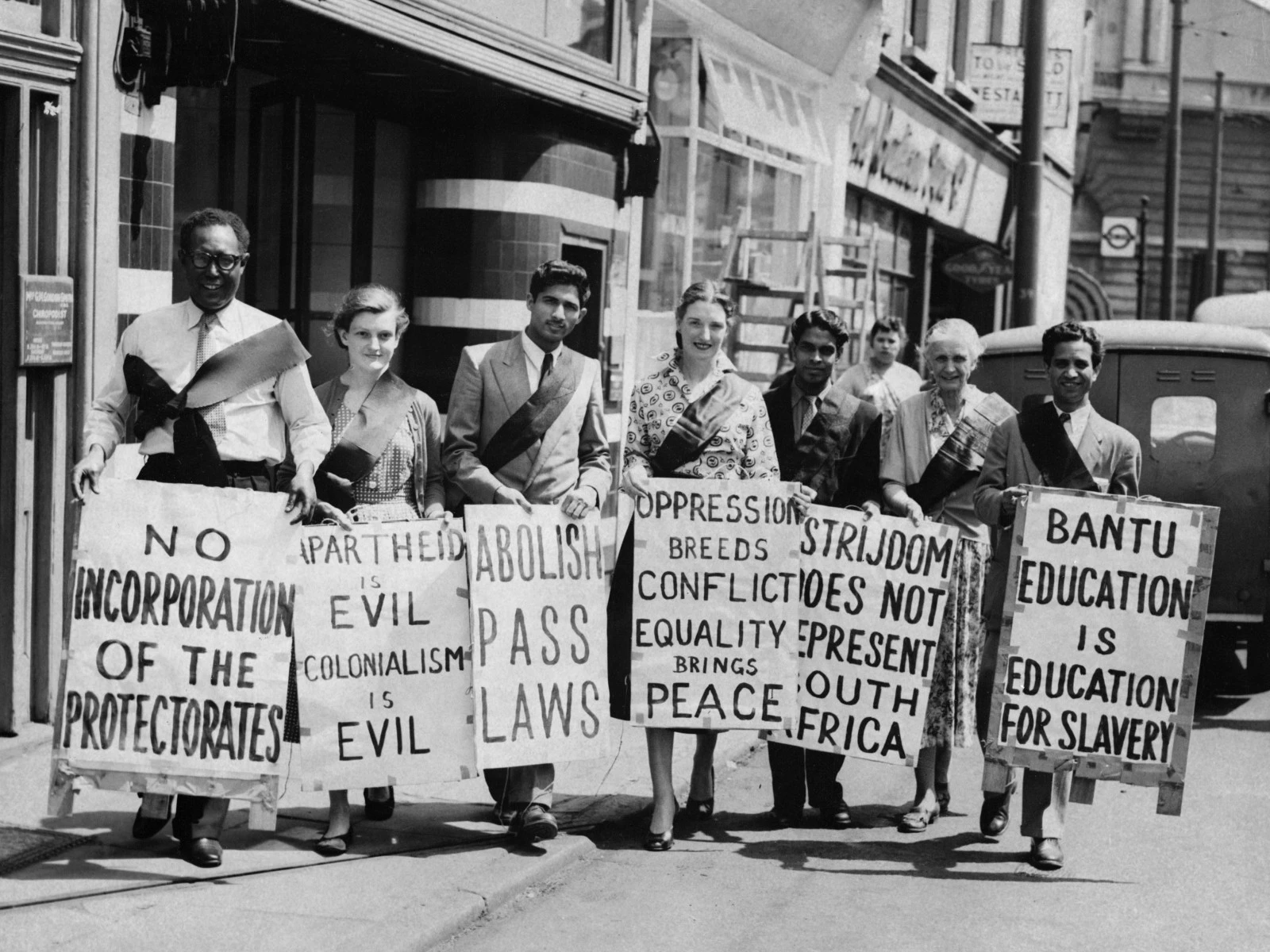
Protest against racism (Photo Credit: Getty Images)
When a warrant was issued for his arrest, Thambi continued to lead peacefully. At a large gathering in Pietermaritzburg, he calmly told the crowd not to respond with violence. His arrest only inspired more people to join the protest.
By early 1914, their efforts paid off. The government gave in to Gandhi’s demands: the £3 tax was removed, Indian marriages were legally accepted, and other key issues were resolved. It was a major win for the community—and for non-violent resistance. Thambi, who had spent more time in jail than most, was a key reason the movement stayed strong and united.
Return and Legacy: A Diaspora Hero’s Enduring Impact
When Gandhi left South Africa in 1914, Thambi Naidoo stayed behind to lead the Indian community through new challenges. He continued speaking out against injustice—fighting segregation on Johannesburg’s trams and opposing laws that limited Indian land ownership and trade. In 1932, the community honored him by electing him President of the Transvaal Indian Congress, the very group he had helped start. Even in his final year, he campaigned against caste discrimination at a local Hindu temple, saying untouchability had no place in society.
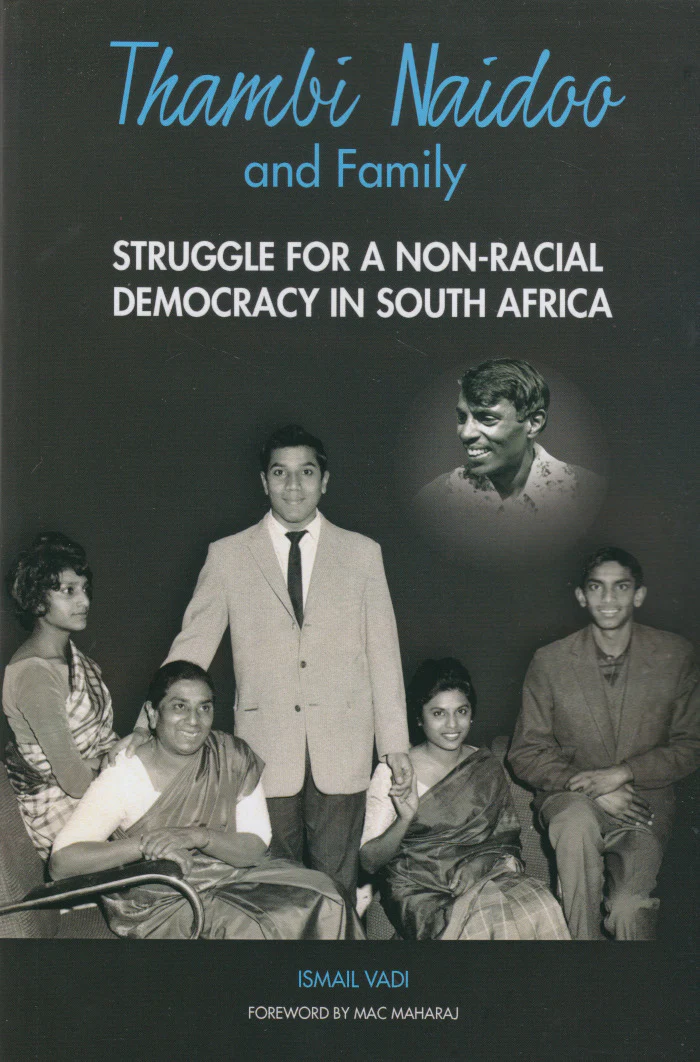
Thambi Naidoo passed away on October 31, 1933, in Johannesburg. He left behind not just a legacy of resistance but also a family deeply rooted in the struggle for justice. He and his wife Veerammal raised their children on Gandhi’s Tolstoy Farm, where they were taught the values of service and sacrifice. Four of his sons went to India with Gandhi in 1914 to study in his ashram. His son Roy Naidoo became a key figure in South Africa’s fight against apartheid, working with the African National Congress. Later generations of the family, known as the “Congress Naidoos,” continued the fight for equality, enduring arrests and bans under apartheid rule.
Today, Thambi Naidoo is remembered as a pioneer of civil rights in South Africa and a proud symbol of the Indian diaspora’s contribution to African history. His story is preserved in museums and archives, including an exhibition at the Apartheid Museum in Johannesburg. Gandhi once said Thambi had “tireless energy” and a deep sense of duty, even though he had never seen India. He called him one of the leading names in the history of Satyagraha. Thambi Naidoo’s journey—from a young migrant to a fearless leader—shows how one person, driven by conviction, can help shape the future of a nation.
ALSO READ | How the Sindhi diaspora quietly built a legacy in Ghana, starting with one man




